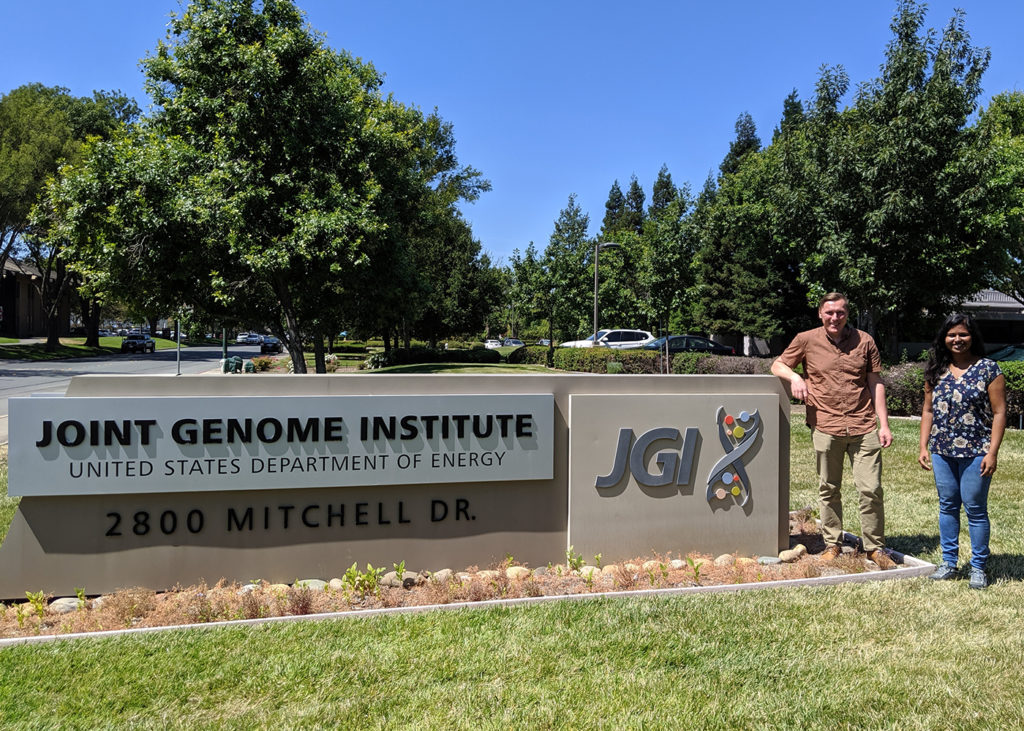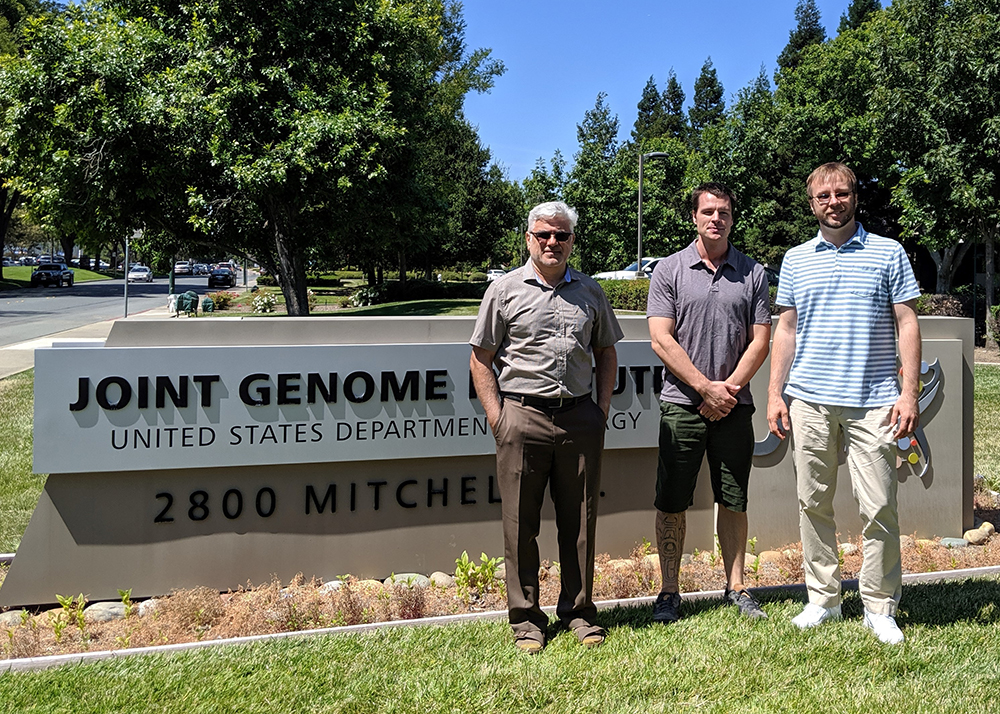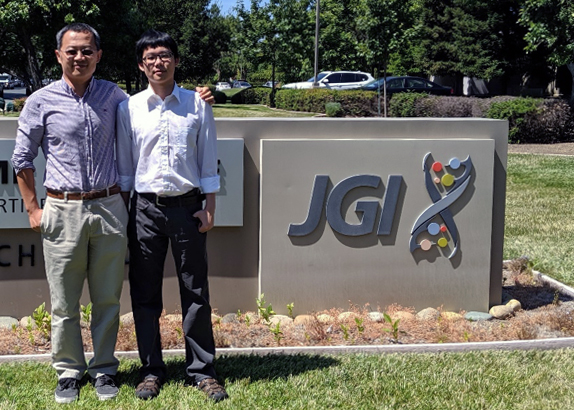Over the course of the summer, the JGI-UC Merced Genomics Internship paired six UC Merced students with seven JGI researchers for bioinformatics internship opportunities in fields ranging from plant-microbe interactions to functional genomics. Hear from five of the Summer 2019 interns, who briefly shared their experiences below.
 Name: Noelle Anderson
Name: Noelle Anderson
Class Year: At the time of the internship, 4th year PhD student in Quantitative and Systems Biology
Mentor: Guohong Wu, Plant Comparative Analysis
What effect has your summer internship with the JGI had on your plans to pursue a STEM career?
Doing the JGI internship has given me a great experience working intermediately between academia and industry, which is something I didn’t even know existed before. Seeing the breadth of interesting work being done at the JGI has really motivated me to think outside of simply looking for jobs/postdocs in industry or academia. It was also a great opportunity to study and learn something totally new during my Ph.D.
What is/has been one of your favorite things about your JGI internship?
Doing the JGI internship has given me a great experience working intermediately between academia and industry, which is something I didn’t even know existed before.
 Name: Deepika Gunasekaran
Name: Deepika Gunasekaran
Class Year: 2nd year graduate student in Quantitative and Systems Biology
Mentor: Ernst Oberortner, Functional Genomics
What effect has your summer internship with the JGI had on your plans to pursue a STEM career? I aspire to pursue a career in research and JGI has been the perfect experience in understanding the requirements and responsibilities of being part of a research institute. It has also introduced me to a new career path of being a researcher in a national laboratory. In the future, I plan to pursue this path and hopefully will be part of such a highly motivating and collaborative research environment such as JGI/LBNL.
What is/has been one of your favorite things about your JGI internship?
My most favorite parts of the internship were the open and collaborative environment, the possibility to reach out to anyone in the Institute to get feedback and insights on the project and everyone’s willingness to guide or mentor me during my internship.
Name: Graham Larue
Class Year: 4th year graduate student
Mentors: Igor Grigoriev and Asaf Salamov, Fungal and Algal Program
What effect has your summer internship with the JGI had on your plans to pursue a STEM career?
What is/has been one of your favorite things about your JGI internship?
During my internship, I got to work with an enormous set of fungal genomics data. For me, it was an opportunity to adapt my existing skill set to a new scale, which presented a host of interesting and ultimately rewarding challenges. Also, my work touched on phenomena that were outside of the area of focus of most of the rest of the group, which made it feel like I had something tangible to offer.
Name: Ricky Yan
Class Year: 3rd year undergraduate student
Mentor: Zhong Wang, Genome Analysis
What effect has your summer internship with the JGI had on your plans to pursue a STEM career?
The JGI summer internship opened the door for me in the sense that I learned many different tools in bioinformatics research. Also, it consolidated my eagerness to attend graduate school.
What is/has been one of your favorite things about your JGI internship?
My favorite thing about my JGI summer is being able to work directly under Dr. Wang and his graduate student Harrison. The amount I learned during this summer is the thing I valued the most, such as AWS, Linux operation, and more. The JGI experiences are just so amazing and truly an inspiration to me.
 Name: Brenda Yu
Name: Brenda Yu
Class Year: 1st year graduate student at Stanford University in the Biophysics program. (Graduated from UC Merced in Spring 2019.)
Mentor: Ben Cole, Genomics of Plant-Microbial Interactions
What effect has your summer internship with the JGI had on your plans to pursue a STEM career?
Returning as a JGI intern for a second time since participating in summer 2017 (read more here on her previous experience) has further solidified my plans to pursue a STEM career, particularly one that incorporates big data. A large part of my project this summer was utilizing a high performance cluster to conduct my work. The experience has inspired me to incorporate powerful bioinformatic tools to my research interests during graduate school and beyond. It has also given me a taste of being a researcher outside of academia and helped me consider working for a Department of Energy site after graduate school. Furthermore, my mentor Ben Cole has been an exceptional help in my summer project, whether it was developing my coding abilities or guiding me through challenges I was encountering. I aspire to pass on the mentorship I had receive to aspiring undergraduate researchers and help expand or develop more internship programs like the JGI Internship Program during my STEM career.
What is/has been one of your favorite things about your JGI internship?
One of my favorite thing about my JGI internship was the learning experience I got in computational research. Overcoming a huge learning curve to utilize several programs in my project was worth it whenever I was able to get a single line of code working and get the desired final output. Being successful in my computational efforts assured me that I had the capabilities to learn coding languages and harness them to unlock statistical patterns in big data.



